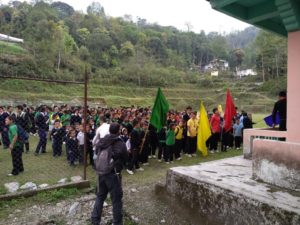Educational learning has been an unusual victim of the ongoing novel coronavirus disease (COVID-19) pandemic. Continuity of learning has been impacted adversely — so has the students’ overall satisfaction regarding preparedness for exams via digital means.
Nearly 58 per cent of higher education students in the Indian Himalayan Region (IHR) were satisfied with their overall preparedness for exams; 20 per cent exhibited lower levels of satisfaction regarding the same, according to a new report.
Only 66.1 per cent respondents took online courses; 33.9 per cent did not receive any digital education from their institutions. About 17.6 per cent used web-based video communications tool such as Zoom, Google Meet and WebEx to take online classes.
These findings were based on a rapid assessment study on digital classes during the COVID-19 pandemic in IHR .
The report, Learning during the Lockdown, was jointly prepared by Integrated Mountain Initiative, a network platform that aims to mainstream concerns of the Indian Himalayan Region and its people in the development dialogue of India; and India And Bharat Together, a social enterprise working to bring opportunities, awareness and mentoring to youth in rural and small-town India.

The study was conducted across the Himalayan region — from Ladakh to Tripura from March to May — to capture insights gained over the first three months of the country-wide lockdown.
The rapid assessment studied the challenges and opportunities brought about by the transition and captured the Himalayan students’ perspective of digital education and efficacy of online classes through online surveys.
A proxy indicator for gauging the efficacy of the online learning format was used. The student-satisfaction level was found to be highly correlated to network quality; when the network was fairly good, reported satisfaction levels were around 59 per cent. With a fall in internet continuity, the satisfaction level fell to 40.3 per cent.
The efficacy was also largely dependent on the satisfaction level and internet continuity. The overall efficacy on a ‘fairly satisfied’ level of a normalised 41.8 per cent was found to be around 45.1 per cent.
Messaging application WhatsApp was the most preferred mode of communication: 94.3 per cent of teachers and students used it. Nearly 43 per cent also relied on Portable Document Format (PDF) and PowerPoint Presentation (PPT); 28 per cent used an audio-visual modes for communication and sending teaching material.

While 81 per cent students had a personal smartphone, personal laptops / desktops were accessed by only 43 per cent. Nearly 74 per cent said they did not have access to any e-resources in their institution; about 8.9 per cent could access portals such as Swayam or digital libraries.
The region had an overall connectivity of 80 per cent that was widely distributed. Jio Network had an overall presence of 44 per cent, whereas the government owned-Bharat Sanchar Nigam Ltd had around 4 per cent presence in the survey area.
Data usage per day was between 500 megabytes and one gigabytes per day for online classes; the cost of data per month was between Rs 300 and 500 per month.
The study, however, had a limitation: The surveys were conducted digitally, and only those students who had internet connectivity could be factored in.
Educator Insights
Qualitative information was collected from school and college educators from the region to gain deeper insight into the challenges and opportunities for online learning through a combination of online surveys and telephonic interviews.
The pivot to online learning was challenging for a number of educators, having to, at a very short notice, orient themselves with both the pedagogical and technical requirements of this new format.
As a result, they experienced an increase in workload and spent a longer time getting accustomed to conceptualising and preparing online content.
A school teacher from Uttarakhand said: “Sitting at home and making videos is challenging. I need someone to record them or need to have a good quality front camera. The sound needs to come out well, and if I miss out on anything, I need to record the video again”.
Lack of internet access and affordability emerged as common barriers, and were exacerbated for those from rural or financially vulnerable backgrounds. Poor internet connectivity precluded the usage of more interactive mediums such as video calls, and instead increased reliance on low bandwidth and less interactive options.
For both students and teachers residing in remote rural locations, the challenges were immense, with some teachers having to walk long distances across the mountainous terrain to connect to the internet.
Despite the many challenges, educators were open to adopting a blended approach in the future — combining online and offline methods of teaching.
The way forward
The final chapter of the report describes recommendations for policy for the Himalayan region. The recommendations have been outlined using a three-stage framework comprising: Production of content, outreach and satisfaction and efficacy.
Given the unique needs of the Himalayas as well as the inequities in access that emerged through this study, IMI and IABT are now collaborating on a similar initiative focusing on school-level education.
By applying an ‘inclusion’ lens to the research, the study will examine how remote learning varies for students from more disadvantaged groups and identify key design considerations for inclusive remote learning in the region.


